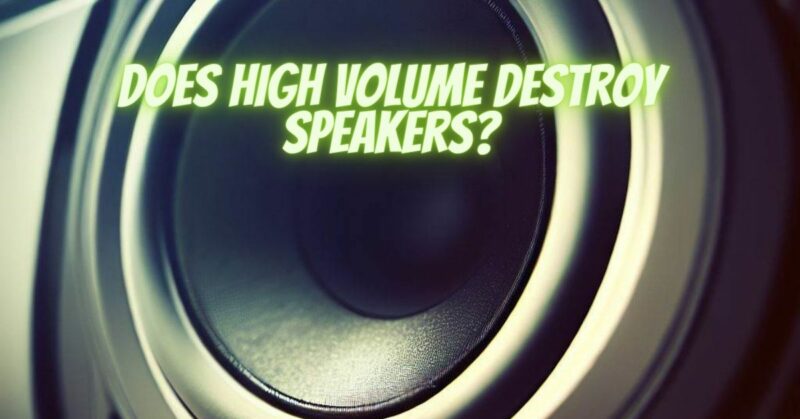The relationship between volume levels and speaker health is a topic of concern for many audio enthusiasts. The question often arises: “Does high volume destroy speakers?” In this article, we will explore the effects of volume on speakers and provide insights into how to maintain speaker longevity while enjoying your audio at various volume levels.
The Basics of Speaker Operation
Before we delve into the impact of volume, let’s briefly understand how speakers work:
- Speakers are transducers that convert electrical audio signals into sound waves. They consist of several components, including a diaphragm (or cone), a voice coil, and a magnet. When an electrical signal passes through the voice coil, it moves the diaphragm, creating sound.
Volume and Speaker Stress
The volume level at which you play your audio content can significantly affect your speakers. Here’s how it works:
- Mechanical Stress: At higher volumes, the diaphragm and voice coil experience increased mechanical stress. The diaphragm moves more vigorously, and the voice coil generates more heat due to increased movement. Prolonged exposure to high volumes can lead to wear and tear on these components.
- Heat Buildup: As the voice coil moves rapidly, it generates heat. Excessive heat can cause damage to the voice coil and its surrounding components. Most speakers have built-in protection mechanisms, such as thermal cutouts, to prevent damage from overheating.
- Power Handling: Every speaker has a specified power handling capacity, typically measured in watts (W). Playing audio at volumes that exceed a speaker’s power handling capability can result in distortion, loss of clarity, and potential damage.
- Distortion: When a speaker is pushed to its limits, it may produce distortion, which can be harmful to both the speaker and your ears. Distorted audio contains high-frequency harmonics that can damage the speaker’s delicate components.
Factors Influencing Speaker Health
The impact of volume on speakers is influenced by several factors:
- Speaker Quality: The build quality and design of a speaker play a significant role in its ability to withstand high volumes. High-quality speakers are often more resilient.
- Power Amplification: The quality and power rating of the amplifier driving the speaker matter. An underpowered amplifier pushed to high volumes can cause clipping and distortion.
- Speaker Type: Different types of speakers, such as woofers, tweeters, and subwoofers, have varying capabilities and tolerances for high volumes.
- Frequency Range: Bass-heavy music with deep low frequencies can put more strain on speakers compared to content with a balanced frequency range.
Protecting Your Speakers
To ensure the longevity of your speakers while enjoying high-quality audio, follow these tips:
- Match Amplifier and Speaker: Use an amplifier that matches the power handling capacity of your speakers to prevent overloading.
- Use Quality Source Material: Ensure your audio source material is of high quality to minimize the risk of distortion.
- Practice Caution at High Volumes: While it’s tempting to crank up the volume, be mindful of speaker limitations and your listening environment.
- Invest in Proper Speaker Placement: Properly position your speakers to maximize sound quality and minimize stress on components.
- Use a Subwoofer for Bass: If you enjoy deep bass, consider using a subwoofer to offload some of the low-frequency demands from your main speakers.
- Regular Maintenance: Periodically inspect your speakers for physical damage or signs of wear and tear. Clean the speaker diaphragms if necessary.
While high volume can potentially harm speakers over time, it’s not the sole factor at play. The quality of your speakers, the amplifier, and your listening habits all contribute to speaker health. By being mindful of your equipment’s limitations, practicing safe listening habits, and investing in quality gear, you can enjoy your audio at various volume levels while preserving the longevity and performance of your speakers.


